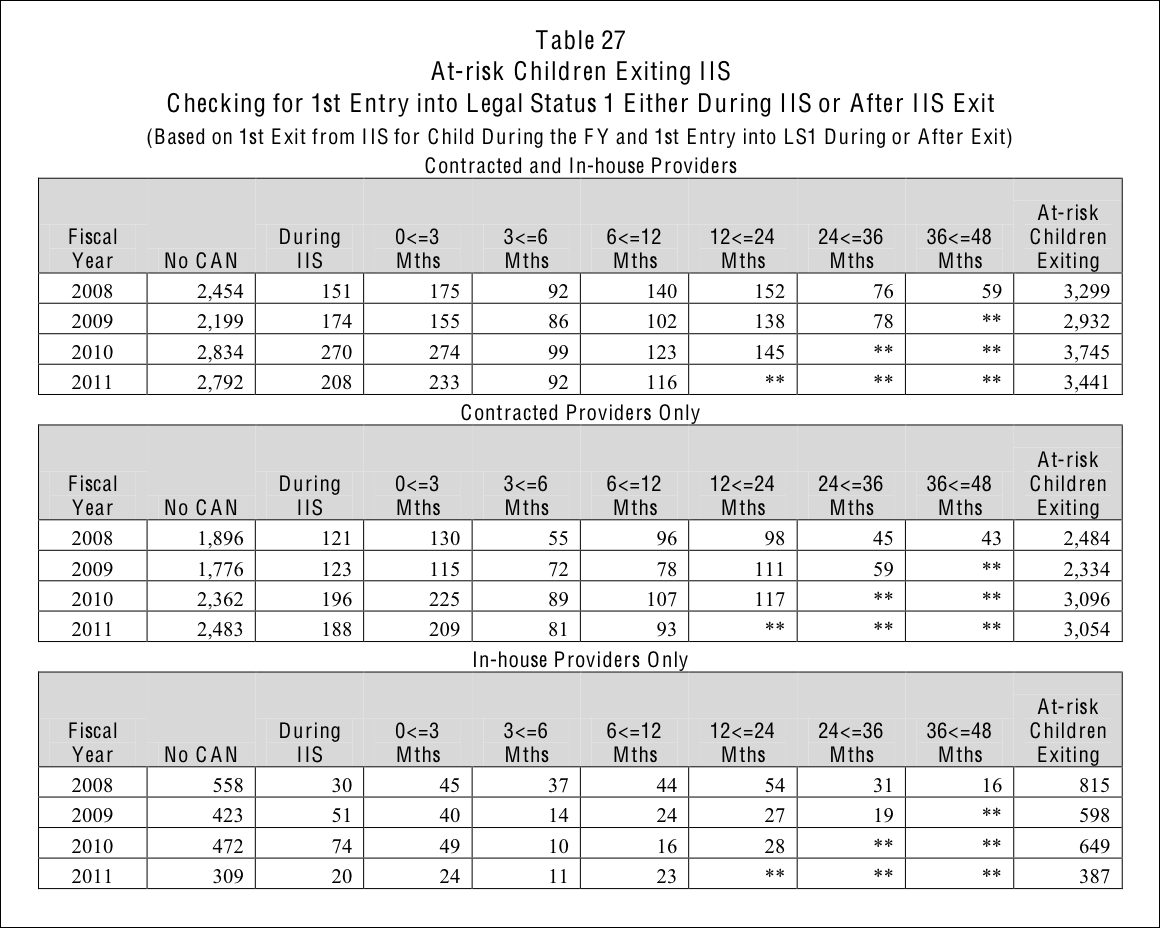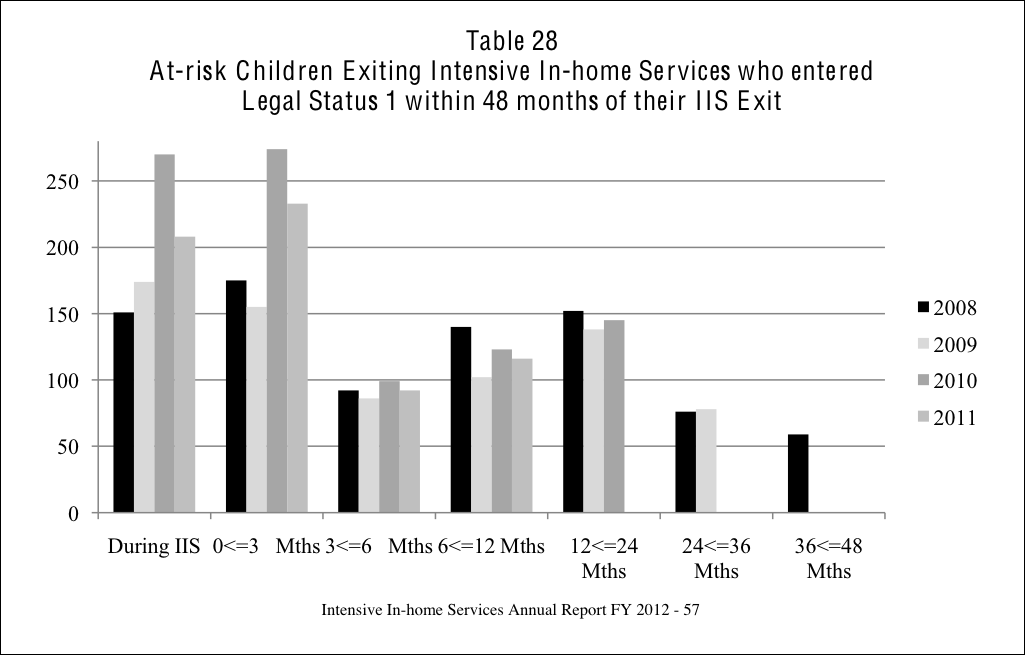Last week we focused on the evaluation of the IFPS therapist. This week it’s time to evaluate the IFPS program.
From the beginning, the chief outcome measure to determine effectiveness of IFPS programs has been prevention of placement. In the 2011 nationwide survey of IFPS programs, an average of 91% of families remained intact at case closure. For those IFPS programs that tracked placement prevention at 6 and 12 months, the average was the same for both time intervals: 86% of families were still together.
The state of Missouri tracks families for four years from date of the IFPS intervention. Here is a summary of the most recent four-year time period:
The state of New Jersey tracks placement prevention one year from completion of the IFPS intervention. Here are the results from 2011:
Some other measures in the Missouri and New Jersey reports include:
- Reason for referral to the IFPS program
- Ages of children
- Duration of services
- List of services provided to families
Program evaluation reports are a valuable source of information, not only to the agency providing the service but to the referring agency, other community services providers, policy makers, legislators, advocates of IFPS, and IFPS agencies nationwide. Evaluations of IFPS contribute to the field of knowledge about IFPS, show areas needing improvement, and provide a strong basis of support for establishing and expanding IFPS programs.
You can view the full reports below:
Missouri 2012 Report (PDF, 1.1 Mb)
New Jersey 2012 Report (PDF, 90 Kb)
Please contribute to the knowledge base by sharing a link to your agency’s most recent IFPS evaluation in the comments below or e-mail them to Priscilla Martens at director@nfpn.org.
_______________
Posted by Priscilla Martens, NFPN Executive Director


